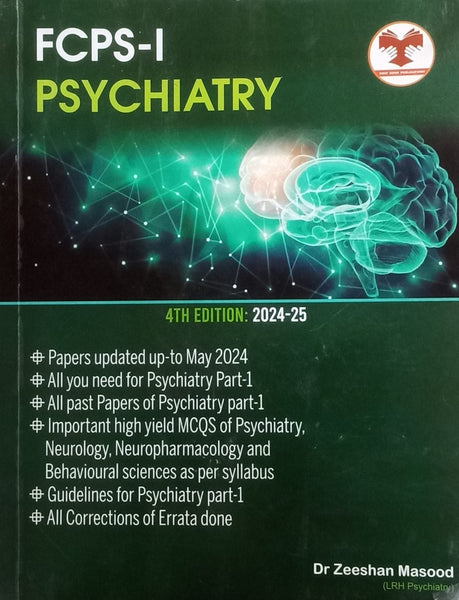Anaesthesia Pool Questions for FCPS One 2nd Edition By Asim Shoaib is a comprehensive guide designed to assist medical students preparing for the FCPS Part One exam in anaesthesiology. Authored by Asim Shoaib, a seasoned practitioner in the field, this book covers a wide array of topics essential for exam success, offering concise explanations and practice questions to reinforce learning.
Key Points:
1. Physiology and Pharmacology: This section delves into the fundamental principles of physiology and pharmacology relevant to anaesthesia. It covers topics such as respiratory and cardiovascular physiology, as well as the pharmacodynamics and pharmacokinetics of commonly used anaesthetic drugs.
2. Anatomy and Regional Anaesthesia: Here, the book explores anatomical structures pertinent to anaesthesia practice, with a focus on regional anaesthetic techniques. It includes detailed discussions on nerve blocks, epidurals, and spinals, along with anatomical landmarks crucial for their safe administration.
3. Anaesthetic Equipment: Readers can expect comprehensive coverage of anaesthetic equipment, including machines, monitors, and airway devices. This section elucidates the functionality and maintenance of these instruments, ensuring candidates are well-prepared to handle them in clinical settings.
4. General Anaesthesia: This segment addresses the principles and protocols of general anaesthesia administration. It encompasses pre-operative assessment, induction, maintenance, and emergence, along with considerations for patient safety and monitoring during procedures.
5. Critical Care and Emergencies: Covering critical care principles and management of anaesthesia-related emergencies, this section equips candidates with the knowledge and skills to handle urgent situations effectively. Topics include airway management, hemodynamic instability, and management of adverse drug reactions.
6. Pain Management: The book provides a comprehensive overview of pain management strategies, including pharmacological and non-pharmacological approaches. It discusses acute and chronic pain syndromes, multimodal analgesia, and techniques such as nerve blocks and epidural analgesia.
7. Obstetric Anaesthesia: Focusing on anaesthetic care during pregnancy and childbirth, this section addresses the unique considerations and challenges in obstetric anaesthesia. Topics include labour analgesia techniques, management of obstetric emergencies, and anaesthetic implications for cesarean sections.
8. Pediatric Anaesthesia: Pediatric anaesthesia principles and practice are covered in this section, emphasizing the differences in anatomy, physiology, and drug dosing in children. It discusses pre-operative assessment, induction techniques, and perioperative management tailored to pediatric patients.
9. Cardiac Anaesthesia: This section delves into anaesthetic management for cardiac surgeries, including coronary artery bypass grafting (CABG), valve replacements, and congenital heart procedures. It covers hemodynamic monitoring, myocardial protection strategies, and specific considerations for cardiac patients.
10. Neuroanaesthesia: The book concludes with a focus on neuroanaesthesia principles and practices. It discusses anaesthetic considerations for neurosurgical procedures, intracranial pressure management, and neuromonitoring techniques, providing a comprehensive overview of this specialized field.
Anaesthesia Pool Questions for FCPS One 2nd Edition By Asim Shoaib is an indispensable resource for medical students preparing for the FCPS Part One exam, offering a structured approach to mastering the core concepts and clinical skills essential for success in anaesthesiology.





















